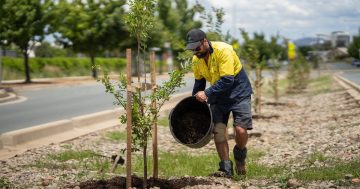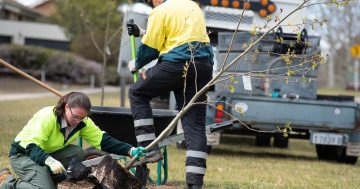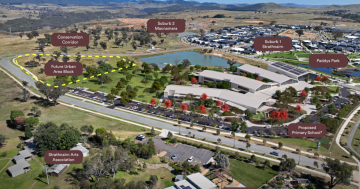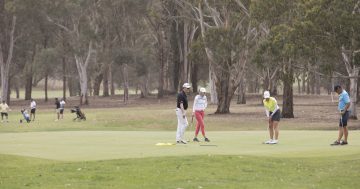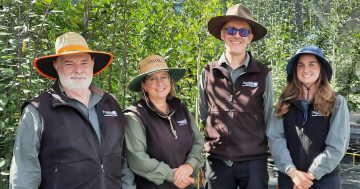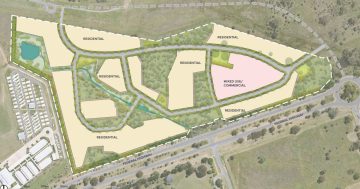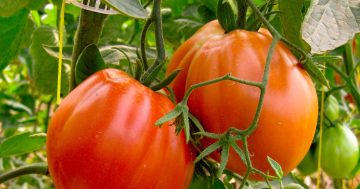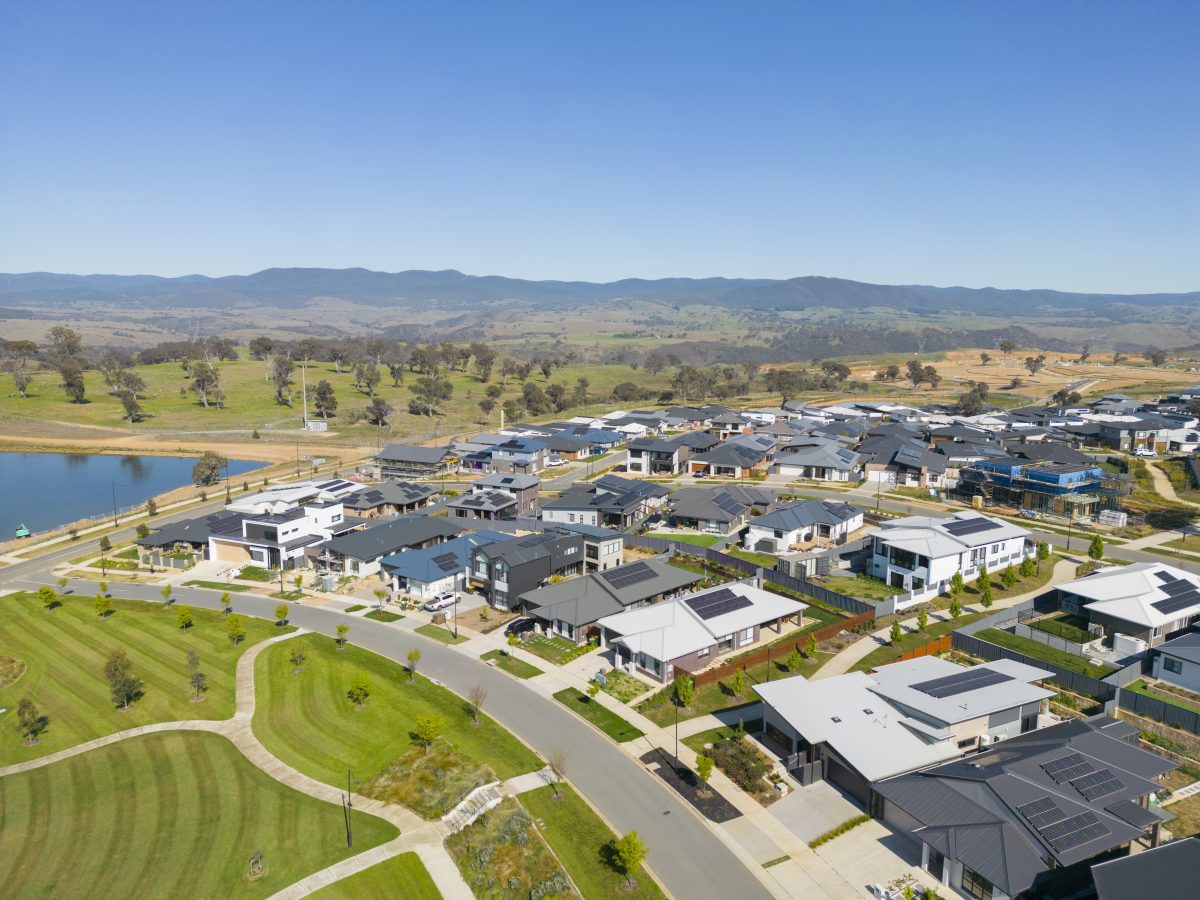
As planned urban greening grows in, greenfield developments like Ginninderry stand to become the gold standard for biodiversity in the ACT. Photo: Ginninderry.
Mature and shady tree canopies are a beloved feature of Canberra’s oldest suburbs, but as planned urban greening grows in, many newer suburbs will challenge the perception that they are naught but concrete jungles, according to a local expert.
The biodiverse tree and plant coverage planned for many newer suburbs actually outstrips considered planning of our older suburbs, according to Matthew Frawley, Urban Design & Landscaping Manager at greenfield project Ginninderry.
He says, at the very least, new suburbs will be much more biodiverse than before development. At best, they could be the gold standard for biodiversity in the Territory.
“Many new suburbs were built on former farmland with few trees already. In time, in the places we’re developing now like Ginninderry, Denman Prospect, Coombs and Wright in the Molonglo, there will be more trees than there were before development,” he says.
“Look at suburbs developed in the last 10 to 15 years like Ford, Bonner and Crace. A decade ago, they fit the common perception of being sparse, but now you drive around them and that perception seems incorrect.”
Trees are a significant part of planning for Ginninderry, most of which was farmland.
Ginninderry is working with thought leaders to incorporate ecology-first thinking into its suburban development as a means of regenerating the land and providing social and economic benefits through building homes.
Developers have already put 600 hectares of the land into the conservation trust, but a big part of that plan involves retaining 80 per cent of the trees that already inhabit the area and supplementing them with many more.
Across Strathnairn and the first stage of Macnamara, around 91,000 plants will be added to bolster the ecosystem. Following research conducted in conjunction with the ANU, this includes large trees, midlevel trees, grasses, shrubs and ground-level habitat.
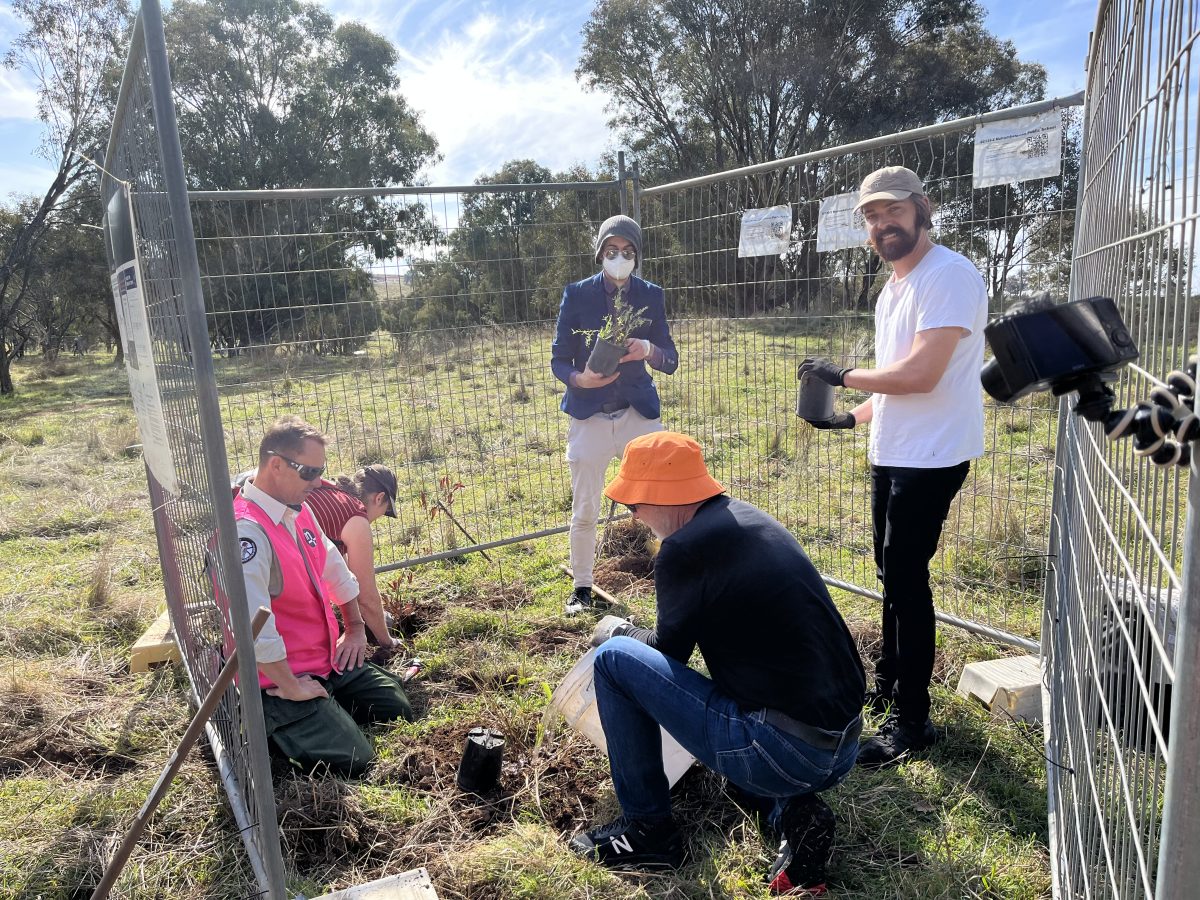
Ginninderry is working with thought leaders to incorporate ecology-first thinking into its suburban development, which will involve planting more than 90,000 trees, shrubs and ground cover plants of various species. Photo: Ginninderry.
Flora planning for the suburbs will be subject to a grid method devised by ACT for Bees to ensure a diverse variety of pollination plants are planted in every 200 x 200 sqm space – the distance pollinators can easily fly.
“Ginninderry is probably the first greenfield development that has used that method in the ACT as a guide to how we should select everything from trees to ground covers,” Mr Frawley says.
“We’re going to establish native vegetation underneath existing trees to see if we can reestablish biodiversity in those former farming lands, with a primary goal to attract pollinators – small woodland birds and various insects – into the urban development.
“It’s about trying to balance biodiversity and development in the area, but it also has social benefits because it’s a critical part of making a suburb look and feel better. Shrubs and ground cover have a different feel to mown grass. Trees enhance the enjoyment of walking, riding and socialising in the suburbs. Generally, people like to walk under shade – it’s cooler, feels better and connects us to nature.”
Bearing in mind that water is the most critical element of sustainable design, Ginninderry’s plan incorporates an entire system of stormwater retention and irrigation of parkland, verges and median strips along main arterial roads.
Mr Frawley says compared to a new suburb from the 70s, Ginninderry is well ahead on the trajectory with respect to considered planting.
Aside from looking better, this methodology will eventually help address climate issues in the area, such as the urban heat island effect.
“A considered approach to the overall planning of an area that looks at elements like the percentage of shade cover provided by trees, extent of planting, road widths and extent of irrigated areas can have a cooling effect on a general area,” he says.
“Interestingly, the provision of unirrigated grasslands is one of the hottest elements in our environment after roadways.
“Plants play an important role in mitigating the urban heat island effect – they retain less heat and, hopefully, more moisture by default. This will, in turn, help with tree canopy cover success. The cooling impact of retaining moisture in the ground with this kind of undergrowth is quite significant.”












